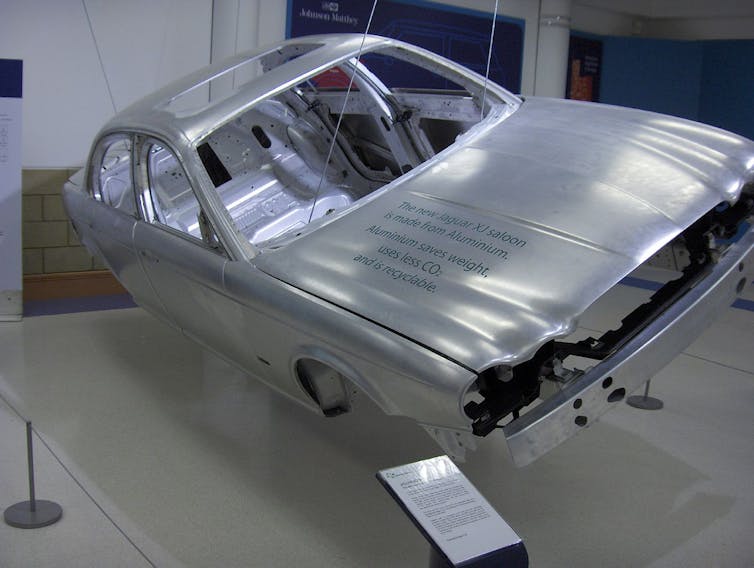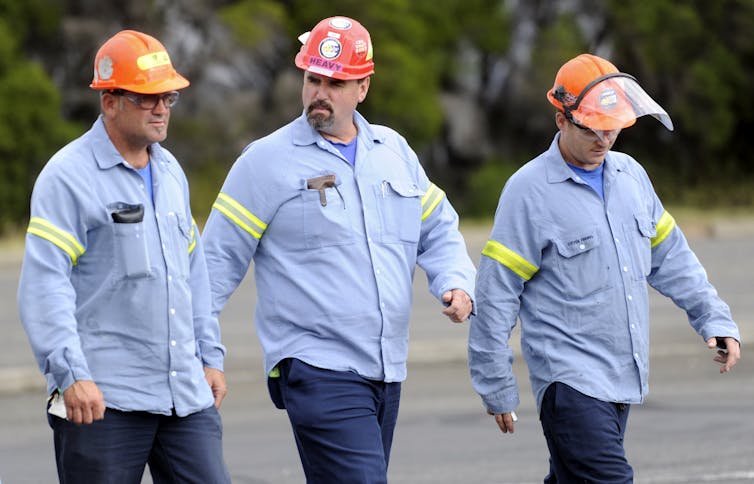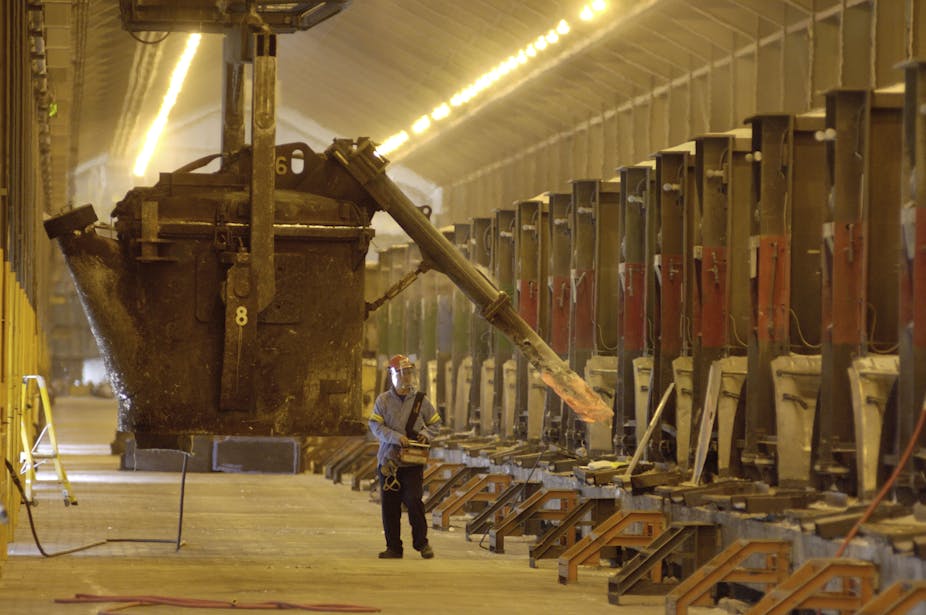The Australian aluminium industry is in the doldrums. A high dollar, low prices and Asian competition are threatening the industry, with older plants in New South Wales and Victoria under threat of closure.
The debate about the future of the industry often concentrates on the high energy usage associated with aluminium production. The joke description of aluminium as “congealed electricity” is never far away.
It is true that a lot of energy is required to make Aluminium. CSIRO calculate that the embodied energy (all the energy used to make the material) for aluminium is 211 GJ per tonne, compared to 22.7 GJ per tonne for steel. This huge difference in overall energy required to produce the metal helps explain the enormous difference in the scales of the two industries: last year, nearly 1500 million tonnes of steel was made in the world compared to 40 million tonnes of aluminium.
Of course, aluminium is over three times lighter than steel, which means that energy savings can be made over the lifetime of the metal’s use if aluminium replaces steel in transport. Also, the overall energy picture looks much healthier if your energy source is hydroelectricity.
Some argue that only countries with hydroelectricity should make aluminium. I would argue that would not be a very healthy economic solution for Australia and would reduce us to being a supplier of raw materials. I also think this analysis underplays the environmental impact of dams and ignores the part aluminium smelters play in providing consistent base loads for power generation. In many countries around the world, aluminium smelters provide the impetus for construction of power stations, as the investors know that the smelter will provide 24 hour base load, 365 days per year.
Why is so much energy required to make aluminium?
In simple terms, the strength of the chemical bond between aluminium and oxygen is significantly stronger than the same bond between iron and oxygen. As a result, much more energy is required to split the bond and form the metal.

There is another complication that makes the situation worse: the relative chemical stability of the two oxides (alumina and iron oxide) and carbon monoxide. Above around 700°C, oxygen prefers to be bonded with carbon than with iron. This means that if you put coal or charcoal with iron ore above 700°C, you can make metallic iron. This discovery was one of the greatest breakthroughs in the history of the human race and underpins a large proportion of the Australian economy, as Australia is blessed with plentiful and rich sources of iron oxide and carbon (coal).
Unfortunately, this is not the case for aluminium oxide. The same reaction needs around 2000°C before metal is made. And, in fact, at that temperature a lot of aluminium carbide and vapour - waste products - is also made. As you can imagine, operating a furnace at 2000°C with poor yield is not attractive and this route for making aluminium has never taken off. Alcoa is currently trying to develop this route but it is unclear whether the “carbothermic route” to aluminium will ever be economically feasible.
Aluminium is made by dissolving the oxide into molten salts, at around a more modest 960°C, and applying a current to help break down the oxide. This is the Hall-Heroult process, which dominates world aluminium production at the moment. The process typically loses around 50% of the incoming energy as low grade heat, which is due in part to the fact that the salts required to dissolve the oxide are so corrosive that there no practical way to keep the heat in. There are also great challenges in the anode and cathode technology in the Hall-Heroult process that result in large resistance losses.
In general, high temperature electrolytic routes for making metals are the last resort for a metal producer. They suffer from low productivity and relatively high energy losses compared to standard pyrometallurgical processes. The aluminium industry would love to have the equivalent of the modern ironmaking blast furnace, which can produce around 3 million tonnes of metal per year in a small fraction of the volume, compared to the many acres of Hall-Heroult cells required to produce that much metal.
What can be done to lower the energy consumption of aluminium production?
A combination of breakthroughs in materials science, developing advanced control systems and straight-out innovation could make a big difference. I and other researchers around the world have identified existing research projects, if developed and commercialised, could reduce the energy by up to 25% of current usage.
For example, Swinburne University of Technology, University of Wollongong and CSIRO are currently working on new refractory materials that can withstand the corrosive conditions of the Hall-Heroult process and keep the heat in. Excellent progress is being made, and if successfully commercialised these materials could make a serious dent into the 25% overall reduction goal.

At the University of New South Wales, new anode materials are being investigated that would allow resistance losses in the circuit to be lowered, as well as advanced control systems that are being trialled in collaboration with industry by Associate Professor Jie Bao. Joint research at Swinburne University of Technology and CSIRO is looking to reduce resistance losses in the cells using new designs and computational modelling of the electrical contacts. Mr David Molenaar at CSIRO has developed a unique laboratory system for testing new anode designs.
Even more radical research at University of Auckland and Swinburne University of Technology is looking to “bulldoze” the current technology and bypass the problems of the carbothermic route by developing new chemistry to crack this old chestnut. Dr Rhamdhani (Swinburne) and his team are investigating thsulphur route, whilst, Professor Mark Taylor’s team (Auckland) are looking seriously at a chloride chemistry route.
All of this research, and other projects around the world, are focused on lowering the energy associated with aluminium production. Naturally enough, I would like to see Australia take the lead on these developments.
The current business environment appears to be very negative. But opportunities for innovation abound in times of crisis. Given Australia’s great natural advantages in terms of raw materials, I see some light at the end of the tunnel.
The time to innovate has arrived.

